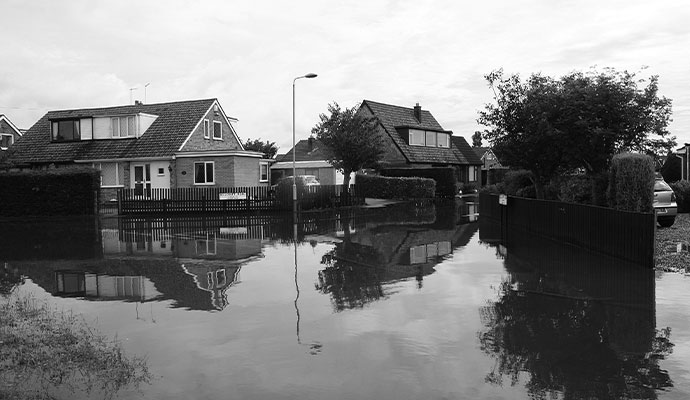24/7 Emergency Services
Projects Complete
- 24/7 Emergency Services
- Free Estimates
- Work Directly with All Insurance Companies
- Bonded & Insured
The Big Fort Worth Flood of 1949

Fort Worth enjoyed tremendous business and population growth in the past 150 years. It was established as a small army outpost on the banks of the Trinity River in 1849. Settlers were drawn to the rich soil and the economic opportunities in that part of the frontier so when the troops left, homesteaders transformed the remaining military structures into churches, schools and stores. Commerce was thriving and the small town grew and developed incrementally, attracting various trades people and businesses, electing a mayor, welcoming a railroad, paving roads, becoming a grain and cattle center, and later on, experiencing an oil boom and building refineries.
During WWII, several military bases were constructed, giving rise to a successful and advanced defense industry. Thousands of people were employed, boosting Fort Worth’s economic development and national prestige. As the city grew and became wealthier, schools, universities, libraries, courthouses, hospitals, and highways were built and the city was transformed into a modern metropolis.
Fort Worth Flood Disasters
Throughout Fort Worth’s history, the Trinity River played a major role in the city’s development and its residents’ lives. Along the river, fish and foul were plentiful, lush grass provided ample grazing grounds for cattle and life-sustaining water was abundant. However, the Trinity at times brought misfortune and devastation to the people of Fort Worth.
Fort Worth floods have been a recurrent theme, especially after severe spring storms. Unfortunately, some of the attempts to rein in the Trinity River were ineffective. The levees built after the 1908 flood did not stop the next big flood. In fact, when the Trinity flooded in 1922, 37 people drowned and more than 3000 acres were inundated, causing mayhem and destruction to numerous businesses and residences. Although the levees’ height was increased following the 1922 flood, the devastating 1949 Fort Worth flood could not have been prevented.
The 1949 Fort Worth Flood
Although significant floods occurred in 1908 and 1922, the Fort Worth flood of 1949 surpassed them in the magnitude of devastation and destruction. Intense and persistent rainfall pounded down an estimated 11-inch precipitation overnight, causing the upper Trinity River Basin to induce a record flood in Fort Worth. In fact, the area of devastation reached ten square miles, destroying over 1000 buildings and leaving over 13,000 people homeless. The flood also killed ten people and inflicted residential, commercial and industrial property damage to the tune of over $15 million, with $11 million from the city of Fort Worth alone.
The 1949 flood has been known as the worst in Fort Worth history. In fact, residents had to use boats to navigate within the city. In addition, the flood incapacitated the city’s water pumps and residents were left without drinking water for three days, until the replacement motor part arrived via truck from Indiana through Missouri and Oklahoma.
Fort Worth Levee Safety Program
The levee system in place today originated after the great flood of 1949, with many improvements added through the years to reinforce and enhance it. In 2002, the Trinity River Master Plan was created for flood damage reduction and ecology renewal. Currently, this plan is overseen by the Trinity River Vision Authority, which manages the collaboration and cooperation between the United States Army Corps of Engineers and the city of Fort Worth.










